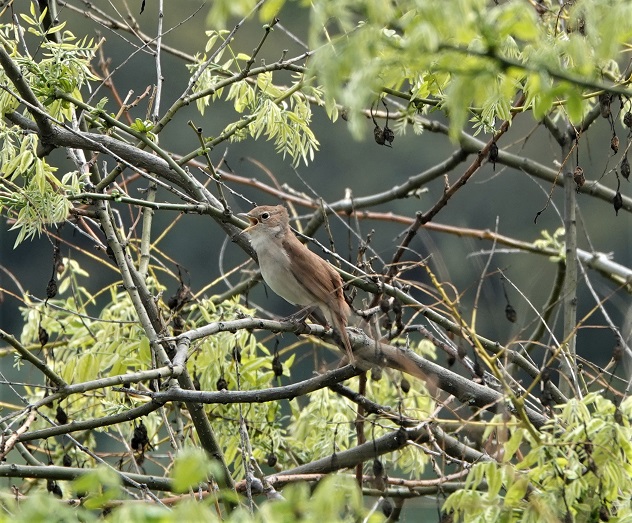Lockdown Birding Part 11
 |
| Common Nightingale (Martin Kelsey) |
From the balcony I can find him perched in an acacia tree close by, or a mulberry. He has favourite song perches, which is where I instinctively look for him. He stands still and almost upright, bill agape. He looks confident and accomplished. There is no need for show, his song speaks for itself.
The song of a Nightingale is a meditation, with deliberate pauses between each phrase to focus the attention. It reminds me of classical Persian music, which is hypnotic and often improvised, with short series of notes punctuated by silence. Like the music, the phrases are varied and of great beauty, simple and clear. It is as if, the Nightingale, as the musician, uses the pause to hold us, to capture us. We guess how the next phrase might flow. It may bear fruity, rich mellow notes or they may be piercing and strident. There are fluid chortles, scratchy notes that have been lubricated smooth as if by honey. And sooner or later, the wonderful high descending whistles that hold one in suspense, "making the hairs on the back of one's neck stand on end" as the late John Meikeljohn, a dear friend and inspiring naturalist, once told me.
 |
| Corn Bunting (Martin Kelsey) |
As reliable as the Nightingale is the Corn Bunting, at least during day time. Whenever I step out onto the balcony I can hear him singing, to my right, across the lane, in the meadow beside us. There he will stand, perched on top of a sheep-browsed stunted bushy holm oak. Sometimes, he flutters off to a bank of brambles, his pink legs hanging limply as he passes over wild flowers. By comparison to the Nightingale, his song is stereotyped and predictable, a short buzzy flourish. But here in Extremadura, the Corn Bunting song is the watermark that labels the open habitat of meadows. Bunting song provides simple, structured but evocative emblems for their respective habitats: Reed Buntings in marshes, Cirl Buntings in scrub-filled valleys, Rock Buntings on cliff faces and the haunting song of Ortolans now starting to fill the open expanse of broom moorland high in the Gredos Mountains.



Comments
Best wishes
Matt
Thanks Martin
Coming from up north in the UK we have no nightingales near us (although they are in Lincolnshire). My go to place for them is Cotswold Water Park which is 25min from where my brother in law lives and possibly their most westerly territory -but goodness knows when i will get there this year.
We have your blogs to look forward too and that's a bonus!
Keep safe.
Janet and Cyril
Matt